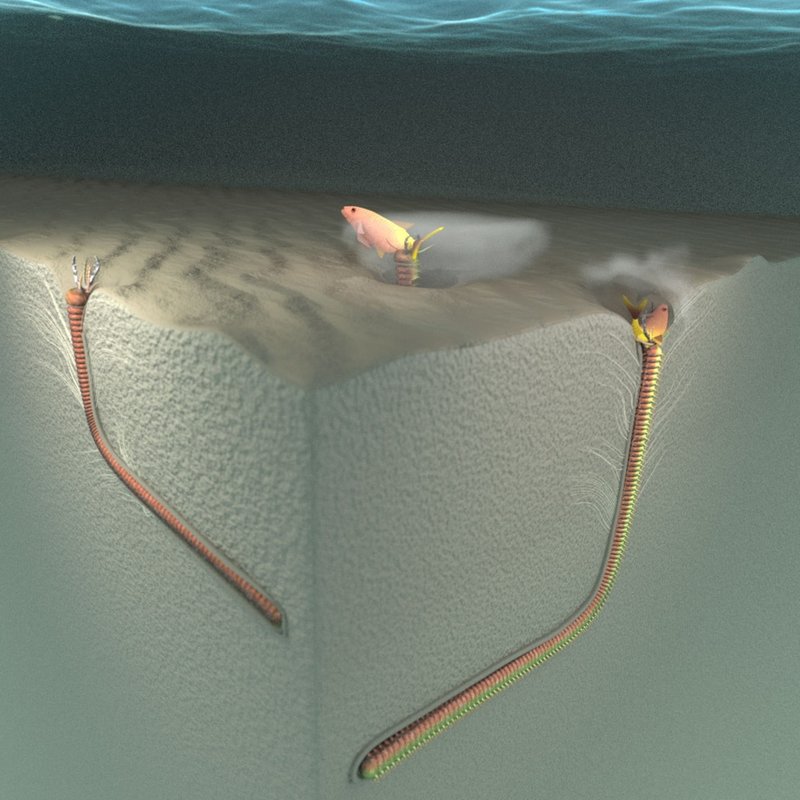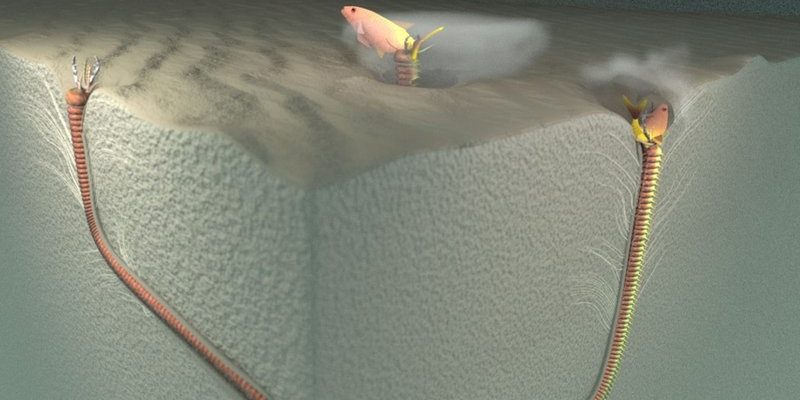
Bobbit worms, belonging to the *Eunice* genus, are a type of bristle worm. You might picture a worm as an unassuming, wriggly creature, but bobbit worms are anything but ordinary. They can grow to impressive lengths—some reaching up to 10 feet! But their real party trick is their ability to hide away in the sand and ambush unsuspecting prey. Understanding how deep these fascinating creatures burrow helps us grasp their ecological role and how they thrive in their environment. So, let’s explore the depths of their sandy homes!
What Are Bobbit Worms?
Bobbit worms are a unique group of polychaete worms found in tropical and subtropical oceans around the world. Named after the infamous “Bobbit” case due to their notorious ability to sever prey with their sharp jaws, these worms can be quite fearsome. They have a long, segmented body covered in bristles, which help them navigate through sand and mud.
These creatures are primarily nocturnal, meaning they come out at night to hunt. They use their excellent camouflage to blend in with their surroundings, waiting patiently for fish or crustaceans to pass by. Once they sense movement, they strike with incredible speed, grabbing their prey and dragging it into their burrow. Honestly, it’s like a scene from a horror movie under the water!
How Deep Do Bobbit Worms Typically Burrow?
When it comes to burrowing, bobbit worms have their own unique style. Generally, they create U-shaped burrows in the sand. These burrows can be quite deep—often several feet down, depending on the size of the worm. A large bobbit worm might dig as deep as **10 feet** or more, creating a cozy, safe space for themselves.
The depth of their burrow is important for several reasons. First, it provides protection from predators. Being buried deep helps avoid larger fish that might consider them a snack. Second, the depth allows them to access a steady food supply from the surrounding waters, as nutrients often settle down to these deeper layers.
Why Do They Burrow So Deep?
You might be wondering why bobbit worms choose to dig deep instead of staying closer to the surface. Well, the ocean is a bustling ecosystem, and like any smart creature, bobbit worms want to avoid competition. By burrowing deep, they’re not only safer but also find a unique niche where fewer competitors are lurking.
Another reason for their depth lies in their hunting strategy. With their long bodies, they can wait patiently for food to approach, striking like a snake when the moment is right. It’s a game of patience and stealth!
The Burrowing Process
When a bobbit worm decides to burrow, it starts by wiggle-walking its way into the sand. It uses its bristle-like appendages to anchor itself, then begins to create a tunnel. The process involves:
- Wiggle and shake: The worm shakes its body side-to-side to loosen the sand.
- Digging: It pushes its body forward, dragging sand behind it.
- Repositioning: As it digs deeper, the worm may occasionally back out to create more space.
This method might seem simple, but it’s quite effective. Bobbit worms use these burrows as both a home and a hunting ground, ensuring they have everything they need within reach.
Materials Used in Burrowing
Bobbit worms primarily make their homes in sandy or muddy substrates. The choice of material is crucial. Sand allows for better tunneling, while mud provides additional nutrients. Depending on their environment, they may even adapt by using both materials. This flexibility is key to their survival in various ecosystems.
Burrows and Ecosystem Impact
The burrowing habits of bobbit worms aren’t just important for them; they also play a significant role in their ecosystem. By digging into the sand, they help aerate the substrate, allowing for better water flow and nutrient distribution. This process promotes a healthier environment for other marine creatures.
Additionally, bobbit worm burrows can serve as shelters for other small animals. They create a mini-ecosystem within their much larger community, demonstrating how interconnected life is beneath the ocean waves.
The Treasure Trove of Nutrients
One interesting aspect of bobbit worm burrows is the nutrient cycling they facilitate. As they dig and move through the sand, they stir up organic materials, making nutrients more accessible to other organisms. This is essential for maintaining the overall health of the marine environment.
Comparison: Bobbit Worms vs. Other Burrowing Creatures
While bobbit worms are fascinating, they’re not the only creatures that call the sandy ocean floor home. Other burrowing animals include:
- Sand dollars: These flat echinoderms burrow into the sand to feed on tiny particles and microorganisms.
- Clams: Many bivalves dig into the substrate for protection and feeding, but they usually stay closer to the surface.
- Ghost shrimp: These lively little critters create intricate burrows but are generally not as deep as those of bobbit worms.
Comparing these creatures helps us see that each animal has its own strategies for surviving and thriving in the ocean. Bobbit worms, with their impressive depths, stand out as some of the most enigmatic diggers.
Conservation Considerations
As we learn more about these incredible creatures and the ecosystems they support, it becomes essential to consider their conservation. Bobbit worms and their habitats can be threatened by human activities, including pollution and climate change. Protecting their environment ensures that we preserve not only bobbit worms but also the myriad of life depending on them.
Sustainable practices and awareness about ocean preservation help maintain the delicate balance within these ecosystems. Honestly, everything is connected, and protecting one species can lead to positive outcomes for many others too.
So, how deep do bobbit worms burrow in the sand? Some may go as deep as **10 feet**, creating a world that’s both mysterious and fascinating. Their unique burrowing habits not only provide them safety but also play a significant role in the health of their ecosystem. By understanding these underwater marvels, we gain insight into the larger picture of ocean life. The next time you think about the sandy ocean floor, remember that it’s home to amazing creatures like the bobbit worm, quietly doing their part beneath the waves.

